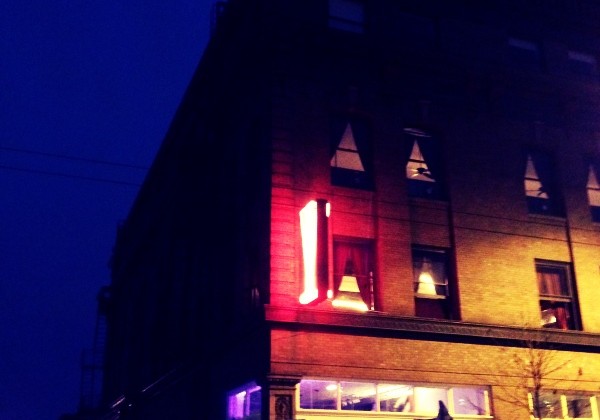You’ve Heard of Backlash. Ready for Frontlash?
Frontlash is the pain that comes before big changes in a city. I can’t take credit for this use of the term,since the first person I heard use it was former Seattle Mayor Mike McGinn. He used the term to describe the neighborhood outrage and upheaval that was happening before the imposition of a “road diet,” that’s taking a four lane road, for example, and reducing it to two travel lanes with a turn lane and parking.
The purpose and effect of the road diet is primarily safety. But the projects around the city were seen as a cave in to the Big Bike lobby. There was a lot of hostility to the changes from neighbors who felt strongly that not only was the move to change the road configuration political but that it would have all sorts of other negative effects. Here’s a commenter on a blog writing about the changes proposed on NE 75th:
I feel terrible for those that lost their parking on 75th. Trying to get out of those driveways will make for dangerous conditions. Not to mention it will negatively impacts their home value. While it doesn’t affect me, I’d vote against this one. I can tell you that those who voted for this do not live on 75th. It’s not eminent domain, per se, but it sure feels like it. Just not right.
The evidence that road diets work, however, is simply overwhelming. There is no harm done and lives can actually be saved and traffic flow improved. Here’s Erica Barnett writing about how wrong the naysayers were about a road diet in West Seattle.
SDOT’s data show that the road diet has dramatically reduced collisions and reduced speeding in general on that corridor. The total number of collisions went down 31 percent after the road was striped for bike lanes and given a center turn lane, and collisions resulting in an injury went down 73 percent. Collisions between cars and cyclists went down to zero.
Now is the same Frontlash effect at work with growth and new development? Of course. Here’s a commenter talking about the pending sale of the Oddfellows Building back in 2008:
Bedford Falls continues to morph into Potterville. “Let’s evict the groups and people that make the building so vibrant, create a shallow “atmosphere” with an empty gesture toward art, jack the rents appropriately so we get an appropriate return on our investment, and move onto spread the love to the next available block!” Sorta reminds me of the nouveau riche Steve Martin in “The Jerk” dressing down a waiter- “Don’t try to sell me that OLD wine- I want NEW wine!”
Hmmm. Witty Frontlash for sure. I can’t say much except take a trip down to the Oddfellows Building now. Here’s how it was described in Seattle Magazine just a few years later:
Following the renovation of Capitol Hill’s historic Oddfellows building, myriad new shops, restaurants and hangouts have opened their doors along three hot blocks of Pine Street, between 11th Avenue and Broadway. This hip microhood is fit for both day jaunts and late-night outings; here, you’ll find the street that never sleeps.
Not much is said these days about the awfulness of the changes at Oddfellows Building. People are far too busy dancing at the Century Ball Room, eating, shopping, attending events at the West Hall, or waiting for the latest ice cream creation at Molly Moon’s. Change isn’t easy. Whether it’s knocking down an old building, renovating an old building, filling an empty lot with more housing units, or building a taller building in the LR3 zone, change makes lots of people uncomfortable.
But my guess is that most of the people wringing their hands in 2008 about the transaction and change at the Oddfellows Building and griping bitterly about the Fat Cats “laughing all the way to the bank” are fans of what’s happening at the Oddfellows Building. Or, like most of us, don’t think about it at all because it works. The Seattle City Council needs to find the same patience with Frontlash they showed with road diets for growth and new housing. Once the storm of Frontlash is over, our city will benefit with more housing choices for people of all incomes, more jobs, and more economic activity and opportunity.


